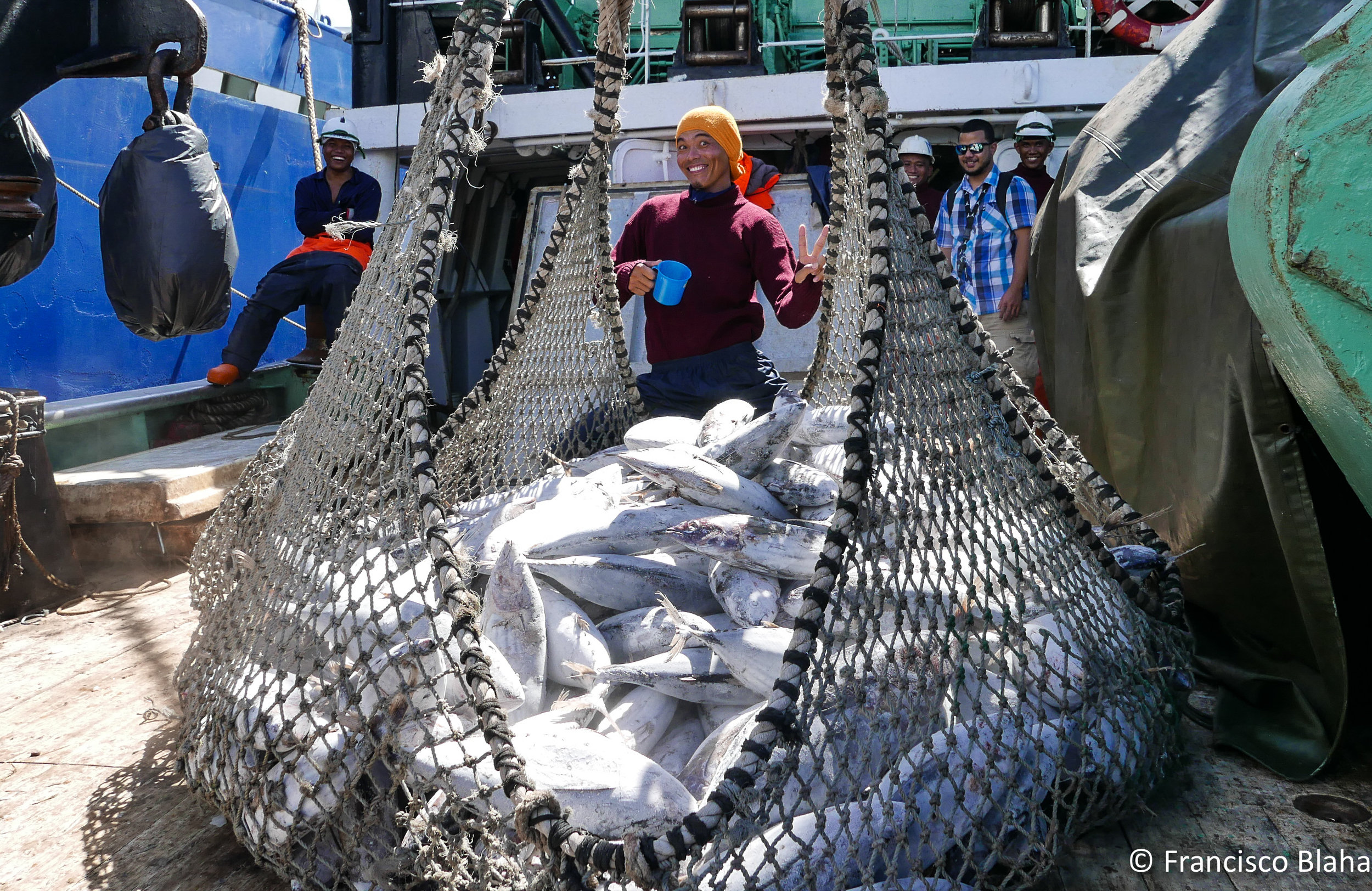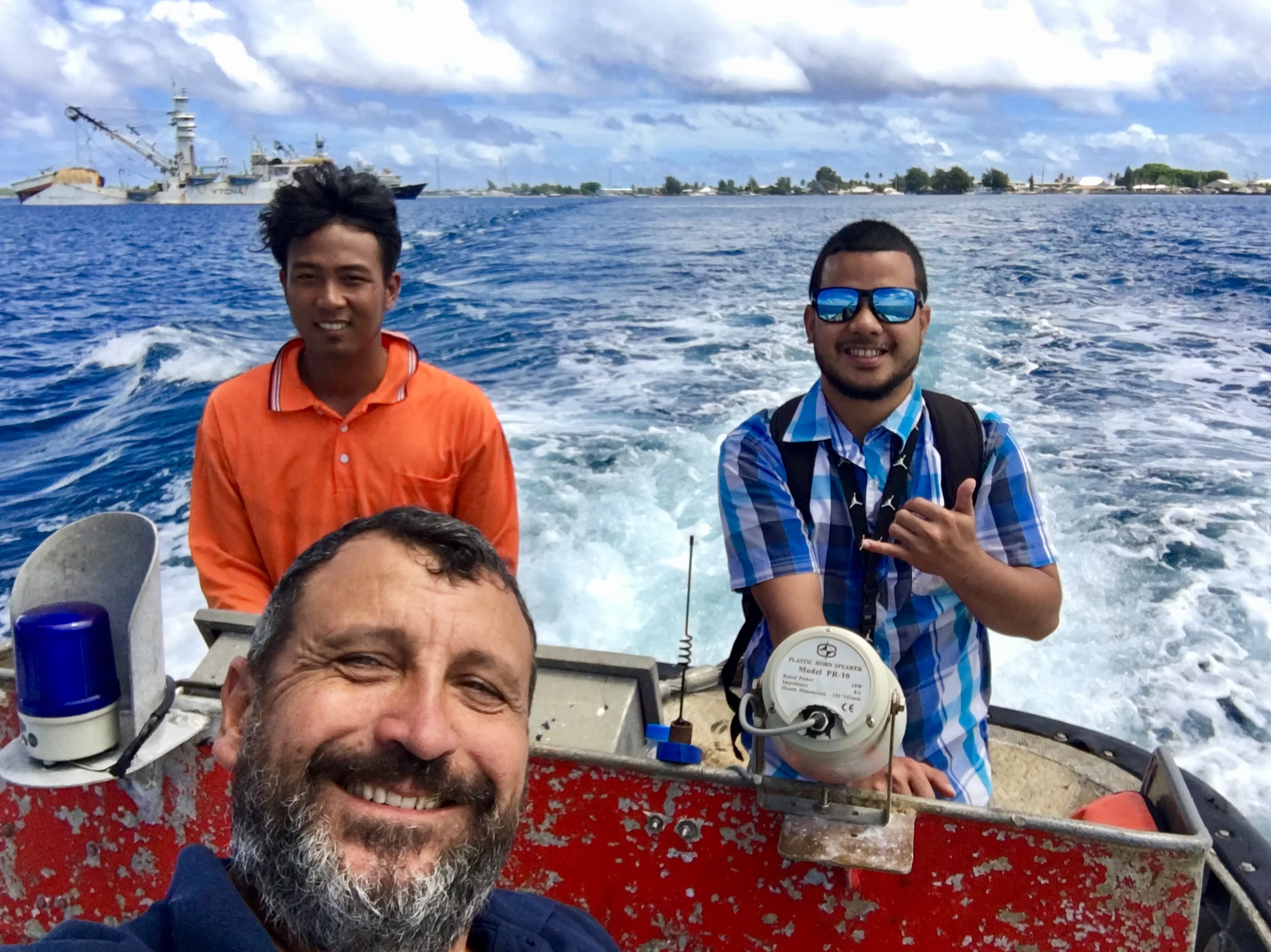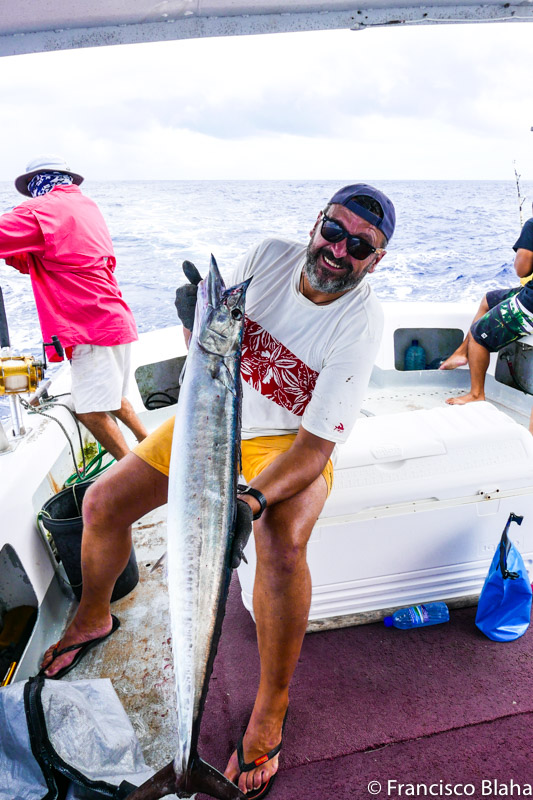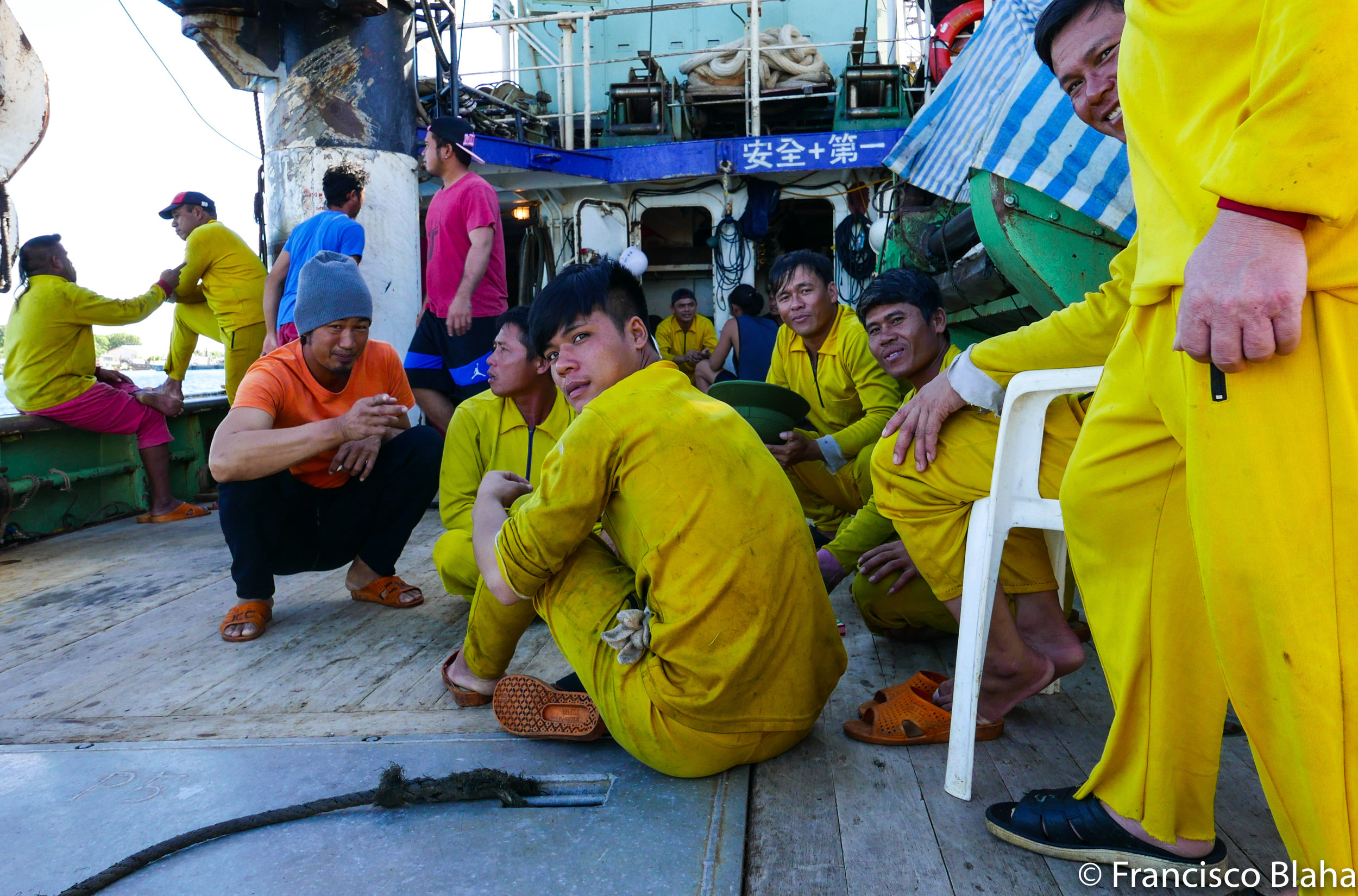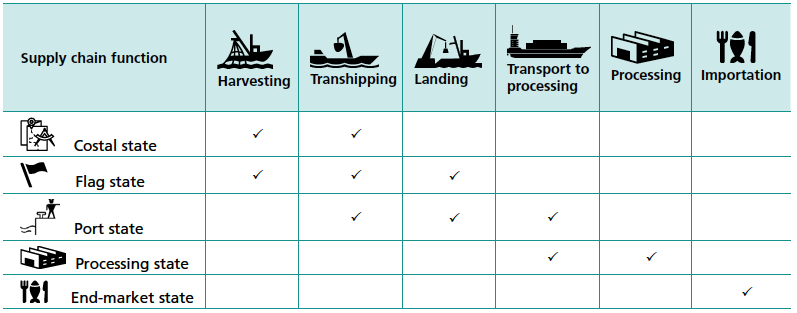I wrote in the past of the past about the Ghoti papers, and when I read the words in the title of this post on a paper, that on top of that has Dr Seuss, I was hooked.
The imperative role of the state in governing fisheries and seafood is something I have insisted for a long time now. Is part of my criticisms of ecolabels and the unrecognised role of inequality, the impacts of poverty and other social injustices that contribute massivelly to poor management and overfishing.
This paper from Megan Bailey and 4 other researchers, is the kind of research I would like to be involved if I had the financial backing of a salary!. She (to my total delight!) wrote phrases like this: “Despite all of the limitations, the sustainable seafood movement seems to exist in a fantastical world of self-congratulatory corporate speak”... which is the exact feeling I have when I hear a lot of the presentation in the seafood conferences I get invited to speak or in the seafood shows I don't go anymore.
They also tackle some of the limitations of traceability and the sad role of the US SIMP and the EU CCS… I would love to see some more on CDS there as potential way to overcome the limitations she mentions and the traceability out of the Seussian world … maybe is something we can work in a future paper ;-) (hint)
I just will quote the abstract and some of my favourite parts, but of course read the original. (If you not subscribed, there are ways to get papers for free even if in a grey legal area)
Abstract
Approaches to counter the overfishing and aquaculture production crisis include those imposed by public governing bodies, as well as those implemented by businesses and non-governmental organizations (NGOs).
In the case of the latter, private actors govern fisheries consumption and production through corporate social responsibility (CSR). In this contribution, we focus on three key tools that businesses are increasingly turning towards in an effort to meet the one particular CSR goal of sustainable seafood sourcing. In this context, the key tools of certifications, fisheries improvement projects (FIPs) and traceability are reviewed, and their potential as well as limits in contributing to continual improvement in pursuit of global seafood sustainability are analyzed.
We argue that seafood CSR has created its own whimsical and fantastical world, a Seussian world, in which company image has become more important than sustainability performance. We posit four important barriers that must be overcome to bring seafood CSR back to reality.
Specifically, we suggest moving away from the business case for CSR, reducing accessibility barriers for small-scale and developing world fisheries, reconciling different labels and sustainability concepts, and better recognizing the imperative role of the state in governing fisheries and seafood.
UNLESSS OMEONE LIKE YOU CARES A WHOLE AWFULLOT, NOTHING IS GOING TO GET BETTER. IT’S NOT
In this contribution, we examine three key tools used to meet sustainable sourcing goals, including seafood certifications, fisheries improvement projects (FIPs) and seafood traceability. The impacts of these tools are reviewed, emphasizing and questioning their potential effectiveness and their limits in contributing to global sustainable seafood production. Despite all of the limitations, the sustainable seafood movement seems to exist in a fantastical world of self-congratulatory corporate speak. But major barriers to real sustainability exist, including lack of a business case for CSR, lack of equitable CSR access to small-scale and developing world fisheries, competing labels and concepts of sustainability, and a lack of engagement with public policy. In some way, seafood sustainability exists as an example of what Jasanoff and Kim (2009) have termed socio-technical imaginaries: collectively imagined forms of social reality reflected in the fulfilment of technological projects. Jasanoff and Kim were speaking specifically of nation-specific imaginaries, while here we are dealing for the most part with private and not public imaginaries. Regardless, the outcome of employing the tools reviewed here, and experiencing the shortcomings we outline without addressing them, is a Seussian world of seafood sustainability
IT’S NOT ABOUT WHAT IT IS, IT’S ABOUT WHAT IT CAN BECOME
Certification
Intuitively, the most important question to be asked about sustainable seafood certifications is: are the products they certify actually sustainable? With regard to fisheries and stock status, Gutiérrez et al. (2012) found that when looking at Principle 1 of the MSC standard (stock status and harvest levels), nearly 75% of certified fisheries were above biomass levels that would produce maximum sustainable yield (BMSY) and over 80% had an exploitation rate that would maintain the stock at, or rebuild it to, BMSY. Yet these results differ to those from a study published only three months earlier that looked at the same stocks, which found that only 44% of MSC stocks had a biomass level above BMSY and only 52% had an exploitation rate that would maintain BMSY or rebuild the stock (Froese & Proelss, 2012). This latter study also examined Friend of the Sea certified fisheries, with the result being worse, only about a third of certified stocks were “sustainable.”
These two different studies are in one way evidence of two parallel realities unfolding in the realm of seafood sustainability: the Seussian world that MSC is living in, versus the grounded reality that scholars and practitioners are living in. (I find this Delightful!)
Just short of 15% of total fisheries and about 5% of total aquaculture production is certified by MSC or ASC (Bush, Belton et al., 2013; Marine Stewardship Council, 2016). The criticisms reviewed above, coupled with the small volume of certified seafood currently available, and the low certifiability of future fisheries and farms globally (i.e., how much production will ever be certifiable? See Bush, Belton et al. (2013)), certifications may always remain on the periphery and not be a scalable solution for seafood sustainability. In the end, certifications will continue to be important because they help define how seafood is caught or produced but do not guarantee the most sustainable seafood (Jonell, Phillips, Rönnbäck, & Troell, 2013).
Despite this reality, an incredible amount of money, and business and scholarly attention (this paper included!) continue to be directed to certifications, leaving other important potential solutions to remain off the radar of those in the Seussian world.
Fishery improvement projects
Fisheries improvement projects are one way to increase the pull towards a certification defined threshold, and in this way, may be an important component towards continual improvement in seafood (M. F. Tlusty, 2012). However, FIPs can also erode progress when, through their CSR mandates, businesses use them to meet a sustainable purchasing goal. Fisheries in FIPs are not managed to the same rigorous level as those that meet a voluntary sustainability standard. Thus, companies that source seafood within a “certification or FIP” to meet volume needs have lowered their sustainability bar.
Furthermore, the success and effectiveness of FIPs have been mixed and uneven with reports showing a large number of FIPs in the early phases of improvement (i.e. workplan design), without moving on to the implementation phase (Sampson et al., 2015). The effectiveness of FIPs is limited to the extent that it is a top-down approach to improvement (based on market demand), is still subject to weak transparency and verification, and often lacks “fair” cost-sharing structures as middle and upstream actors often bear most of the costs. The business case for these upstream actors has yet to be demonstrated. Despite these limitations, FIPs hold potential for using market forces to drive improvements through a collaborative approach, particularly in small-scale and developing world fisheries.
Traceability
Certain governments are tackling the current opaqueness in supply chains through data requirements for imported seafood products while some NGOs are running campaigns that aim to increase consumer demand for traceable seafood products (Bailey, Bush, Miller, & Kochen, 2016). Improving traceability in seafood supply chains is not without challenges as it requires intense sectoral and intra-sectoral collaboration across countries, cultures, and businesses.
Moreover, there are currently no agreed upon guidelines or standards delineating what constitutes a minimum set of data elements to be reported and or acceptable verification systems that make up a credible traceability system. Consequently, companies tend to develop their own systems resulting in a myriad of traceability systems and databases that may not be compatible with each other. Additionally, the United States relies on company to company traceability, operationalized through their new Seafood Import Monitoring Program (SIMP), while the European Union relies on country to country traceability, operationalized through the EU IUU programme. This lack of coordination has limited implementation, interoperability and impact of seafood traceability (Hardt, Flett, & Howell, 2017). My note: None of both programs tackle traceability in a meaningful way, read here)
To address some of these issues, WWF and the Global Food Traceability Center initiated a Global Dialogue on Seafood Traceability (GDST) that seeks to develop a global framework for seafood traceability useable by businesses around the world. Beyond technological roadblocks, traceability is also challenging due to the unequal distribution of costs and benefits associated with its implementation. The perception is that benefits tend tobe higher for downstream companies in terms of increased legitimacy and reputation and costs carried by upstream actors (Bailey et al., 2017). Broadly speaking, traceability holds great potential for eliminating IUU fishing, combatting seafood fraud, and ensuring sustainability claims are verified but it is questionable whether consumers should be—and can be—the ones driving the demand for traceable and legal seafood products (Bailey & Egels-Zandén, 2016).
My note: Catch Documentation Schemes have a role to play here: See here and here, of just better read this book
YOU HAVE BRAINS IN YOUR HEAD. YOU HAVE FEET IN YOUR SHOES. YOU CAN STEER YOURSELF ANY DIRECTION YOU CHOOSE
Private governance, of which CSR is a part, is generally believed to have emerged in response to the difficulties that states have had in effectively regulating public marine resources such as fisheries.
By setting “higher” standards than state legislation, voluntary, often NGO-led, governance vis a vis certifications (Tlusty et al., 2015) is argued to incentivize governments to “ratchet up” their regulatory performance (Cashore, Auld, Bernstein, & McDermott, 2007). But it is not “either-or” when it comes to seafood governance. Rather, weare increasingly seeing a discussion of hybrid forms of governance, where states contribute fundamentally to how private governance is assembled and operates (Gale & Haward, 2011). Perhaps this hybrid approach is what can bring us back to reality, and away from the fantastical and whimsical Seussian world of pseudo-seafood sustainability.
There is still debate around the extent to which CSR programmes, particularly certified, labelled, and traceable products, are actually representative of sustainable fisheries. As is the case with the public management of fisheries, all private approaches come with their own set of challenges and criticisms. These have been highlighted here to provide some food for thought on avenues of future research. So: where to from here? Interactions between standards and approaches (such as MSC, FT-USA, Monterey Bay Aquarium’s Seafood Watch), and between private and public actors are constantly evolving. Ideally, improved transparency in production and purchasing practices will promote a race to the top (Bailey & Egels-Zandén, 2016). It will be important to ensure the largest number of players can compete in that race, however, particularly those in the small-scale sector in the developing world.
Coming back around to the idea of socio-technical imaginaries (Jasanoff & Kim, 2009), it is likely harder to keep up the imaginary façade, as the number of participants increases; maintaining a Seussian world means continuing to keep sustainable seafood the purview of the few. Yet seafood sustainability is a “governance concert” (Barclay & Miller, 2018), and probably a symphony if it is to be at its best. Moving into the post-Seussian seafood sustainability era will therefore require all hands on deck to ensure that seafood CSR delivers in reality.
